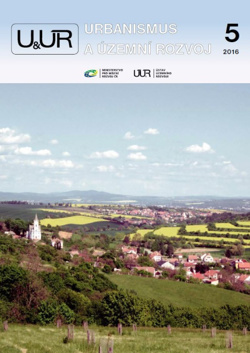
Garden architecture and landscape planning in the context of mass housing estates built in the second half of the 20th century, by Anna Magni
This article, focused on aspects of garden architecture and landscape planning in the context of the mass housing estate zones that originated between the 1960s and 1980s, takes a fresh look at the relation between housing construction and elements representing nature and landscape in urban settings. Based on an analysis of selected objects as well as interviews with those who designed these housing estates and my own field research in particular, this article comments on various ways of managing greenery and open vegetation in housing estates. On one hand, traditional urban constituents such as streets, squares, courtyards and parks are absent, while on the other, a new type of continuous green setting and modifications to this can be found in housing estate zones. In this context, the concept of urban landscape is discussed in this article. Examples are generalized in the form of six basic types of the relation between built-up areas and the landscape. This typology can be used for prospective management of the exterior of mass housing estates as well as for simple understanding of the green setting of housing areas.
A few contributions ensuing from the 20th National Conference on Spatial Planning and the Building Code, by Zdeňka Fialová, Karel Maier, Vladimír Dujka & Jiří Dujka and Želmíra Kalinová
In cooperation with the Institute for Spatial Development, the Ministry for Regional Development held the 20th National Conference on Spatial Planning and the Building Code in November 2015 in Ostrava. Besides reflecting on developments in spatial planning in previous years, the conference witnessed contributions on the preparation of an amendment to the Building Act, problems of sustainable spatial development, subsidies for spatial planning, policies of spatial development, architecture and building culture in the Czech Republic, and project documentation. The editors of Urban Planning & Spatial Development asked the speakers for articles based on their presentations so that their contributions could be published in the journal. Four such articles are presented in this issue; all presentations from the conference are available on the website of the Institute for Spatial Development.
Application of the latest amendment to Act 258/2000 on Public Health Protection in the practice of the Regional Public Health Authority, by Helena Beránková
This article is a commentary by a member of the staff of a body for public health protection (Regional Public Health Authority) on the latest amendment to Act 258/2000 on Public Health Protection. In effect since 1 December 2015, a fundamental change has been made by an addition to §77 of the Act entrusting health officers with the assessment of the position of new buildings that require noise protection (residential, medical and educational premises) in locations where noise is already at a high level. This creates additional work for Departments of General and Municipal Health Protection at Public Health Authorities, as they have to produce obligatory reports for each new building. The principle is correct, however: the builder must be more responsible when making decisions on where and under which conditions he/she wants to live if the immediate surroundings are already used for certain purposes. Another important change is the transfer to the municipalities of responsibility for possible nuisance caused by performance of loud music in public areas. Municipal authorities must now consider whether residents and visitors wish to be entertained or consider the noise a nuisance.